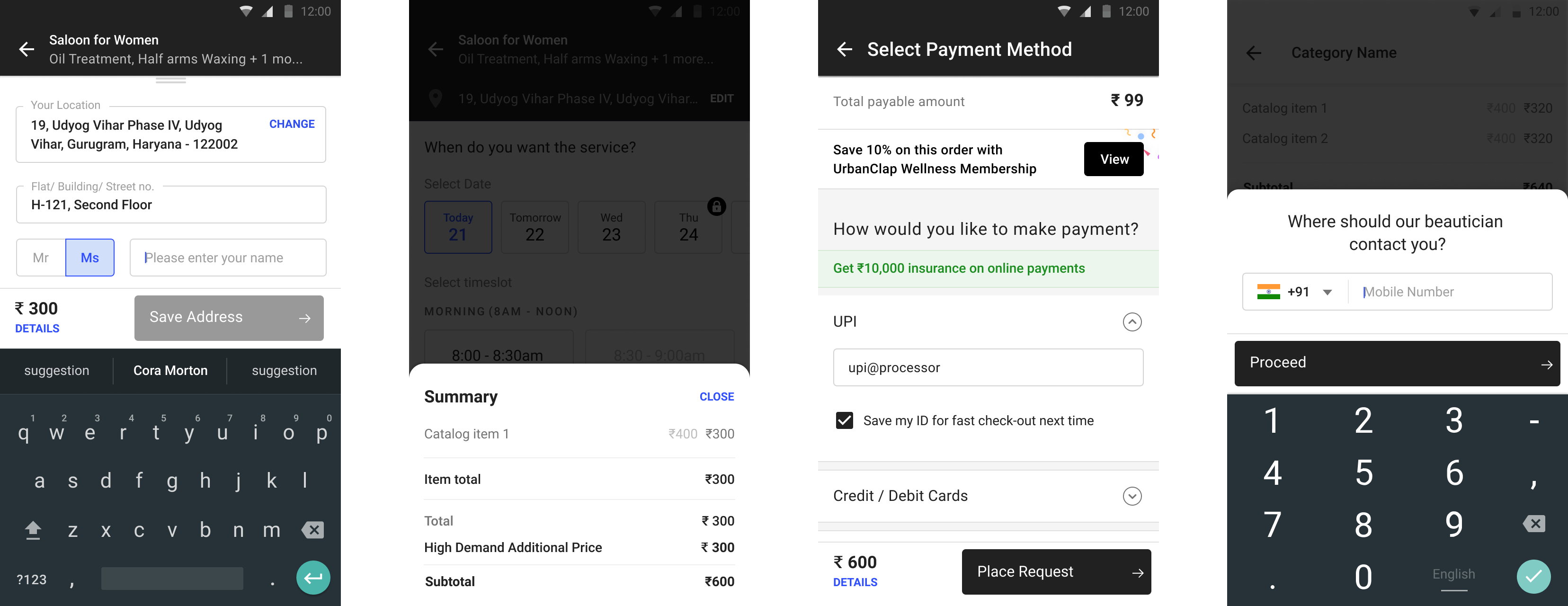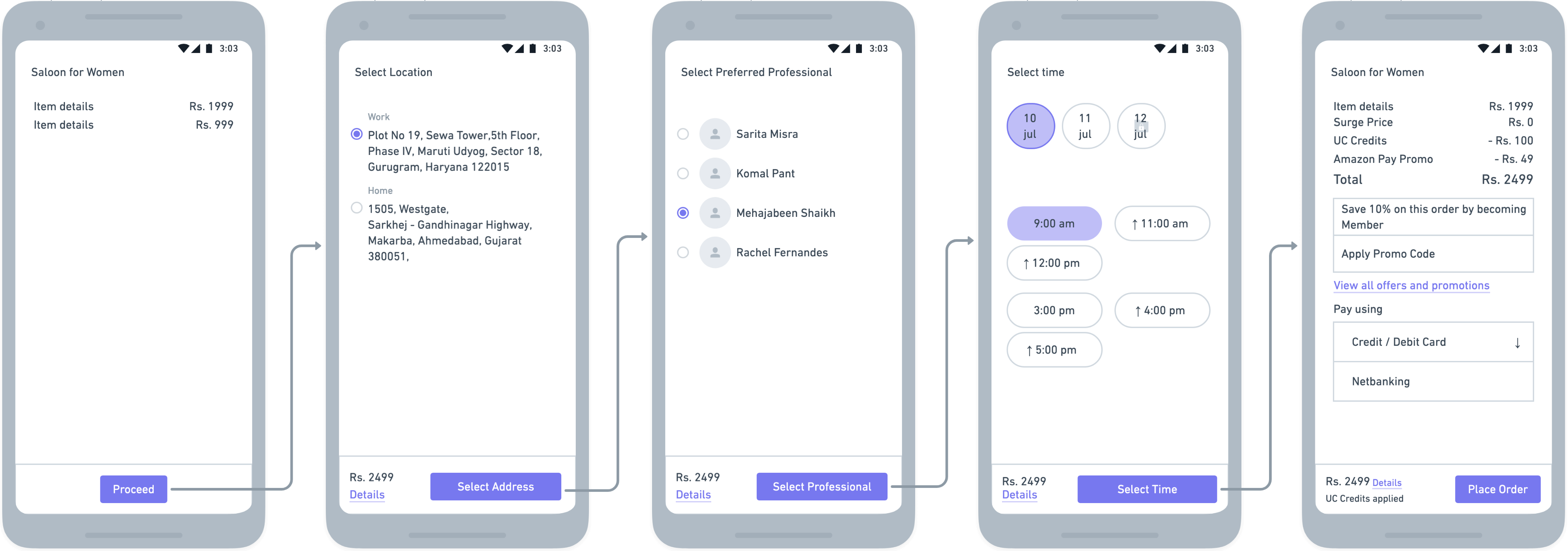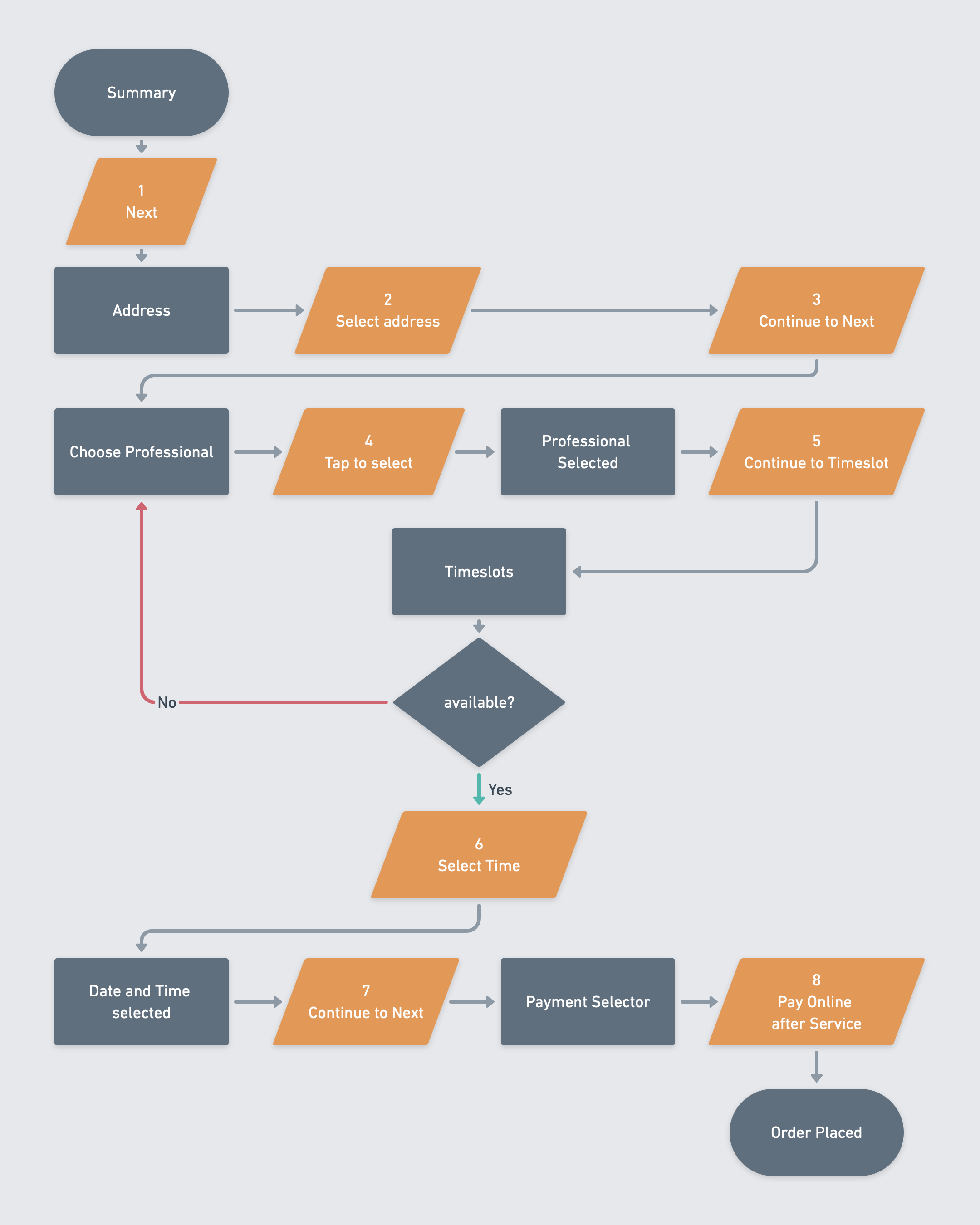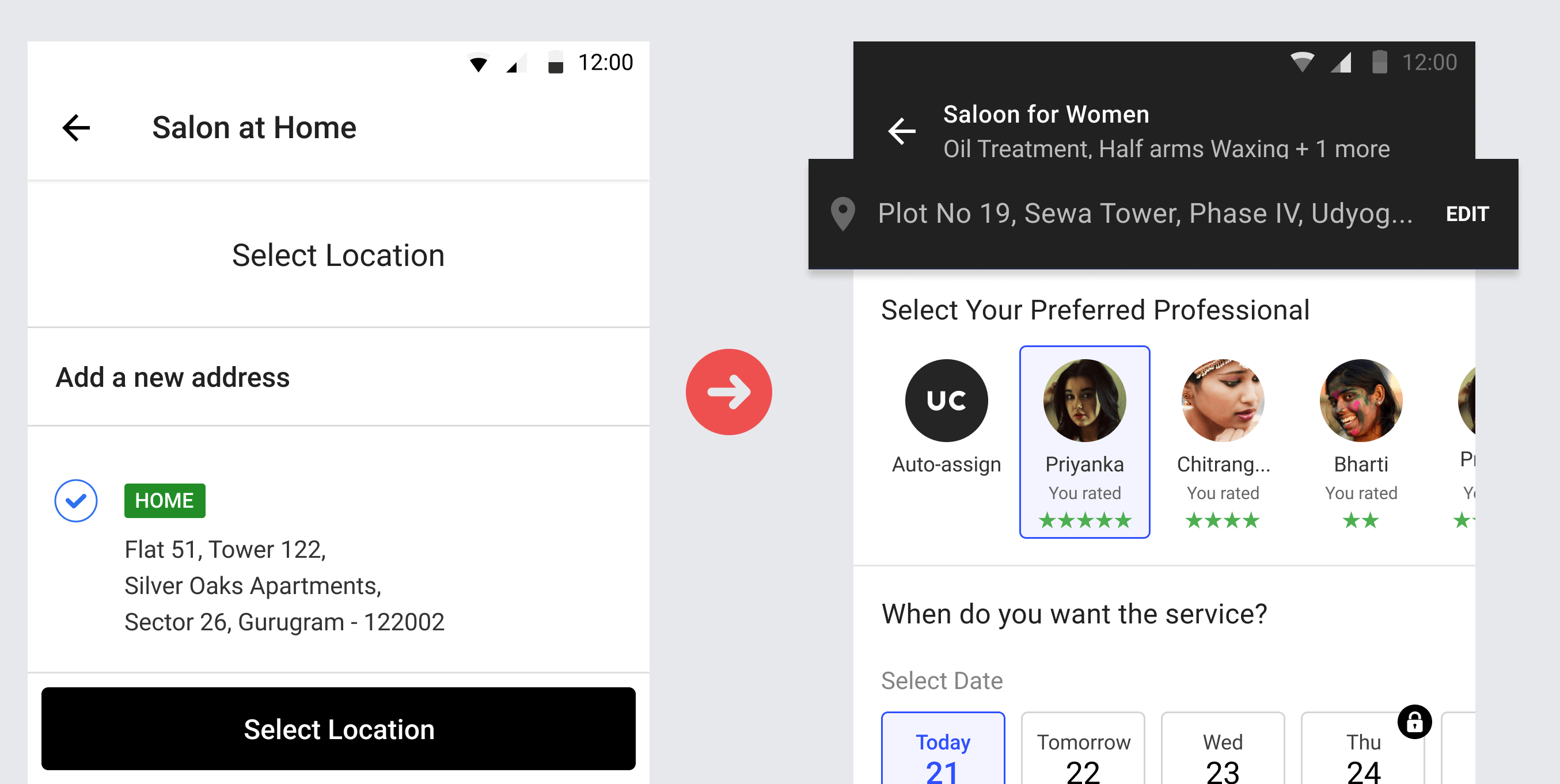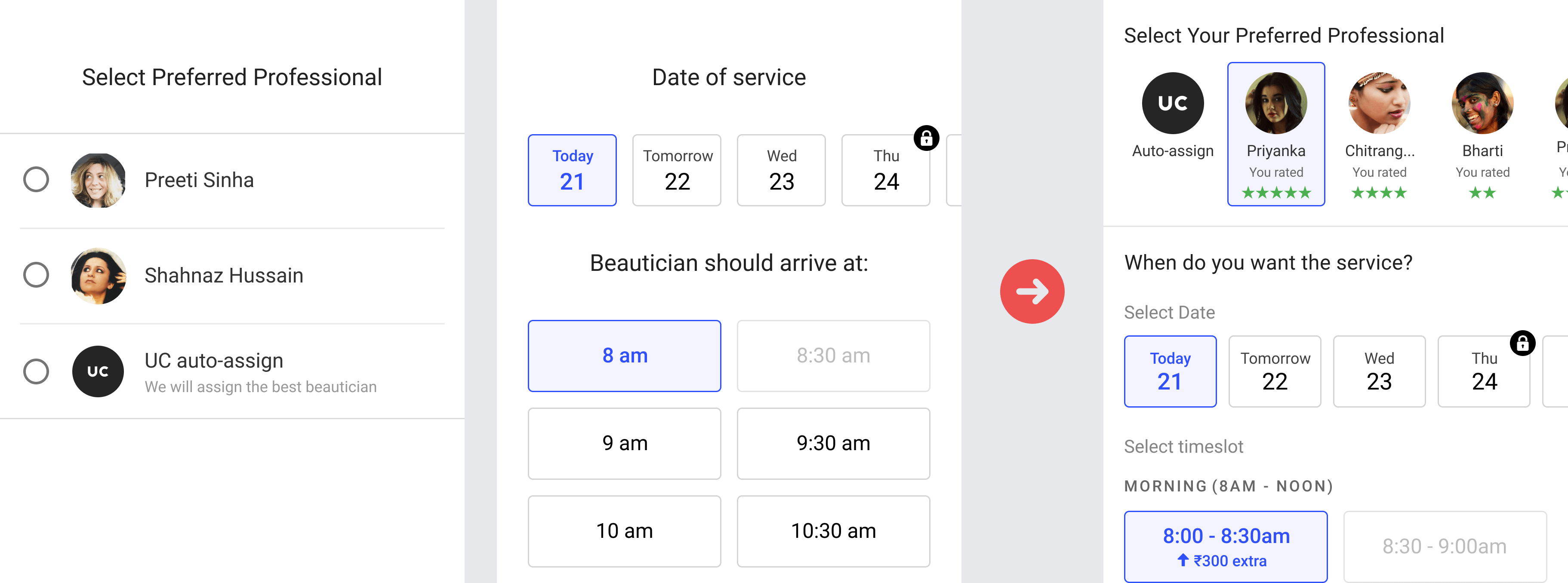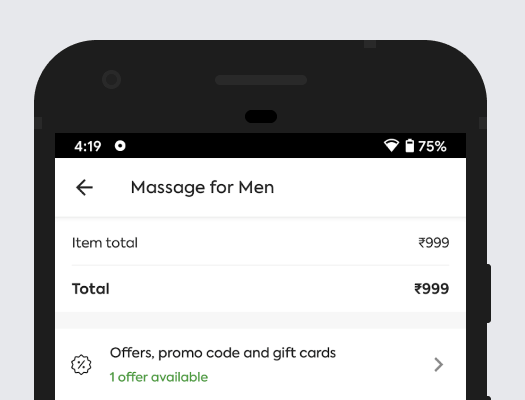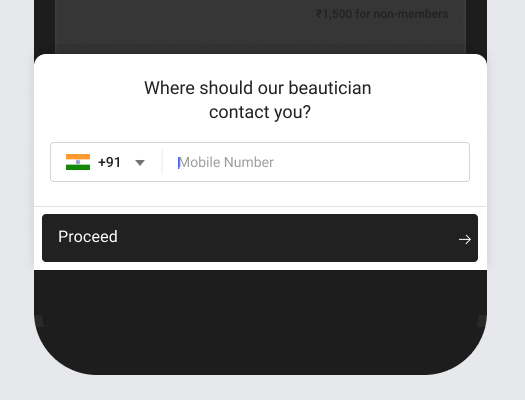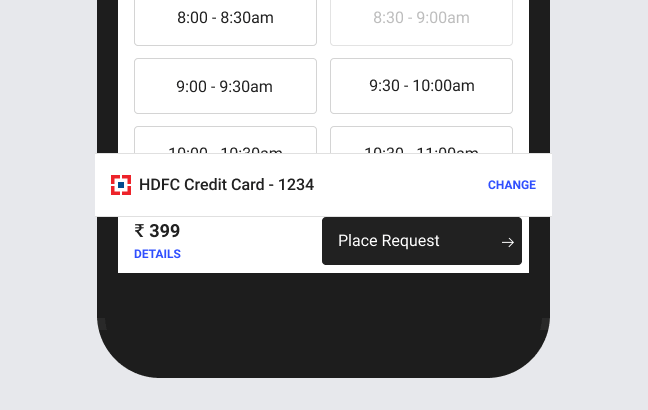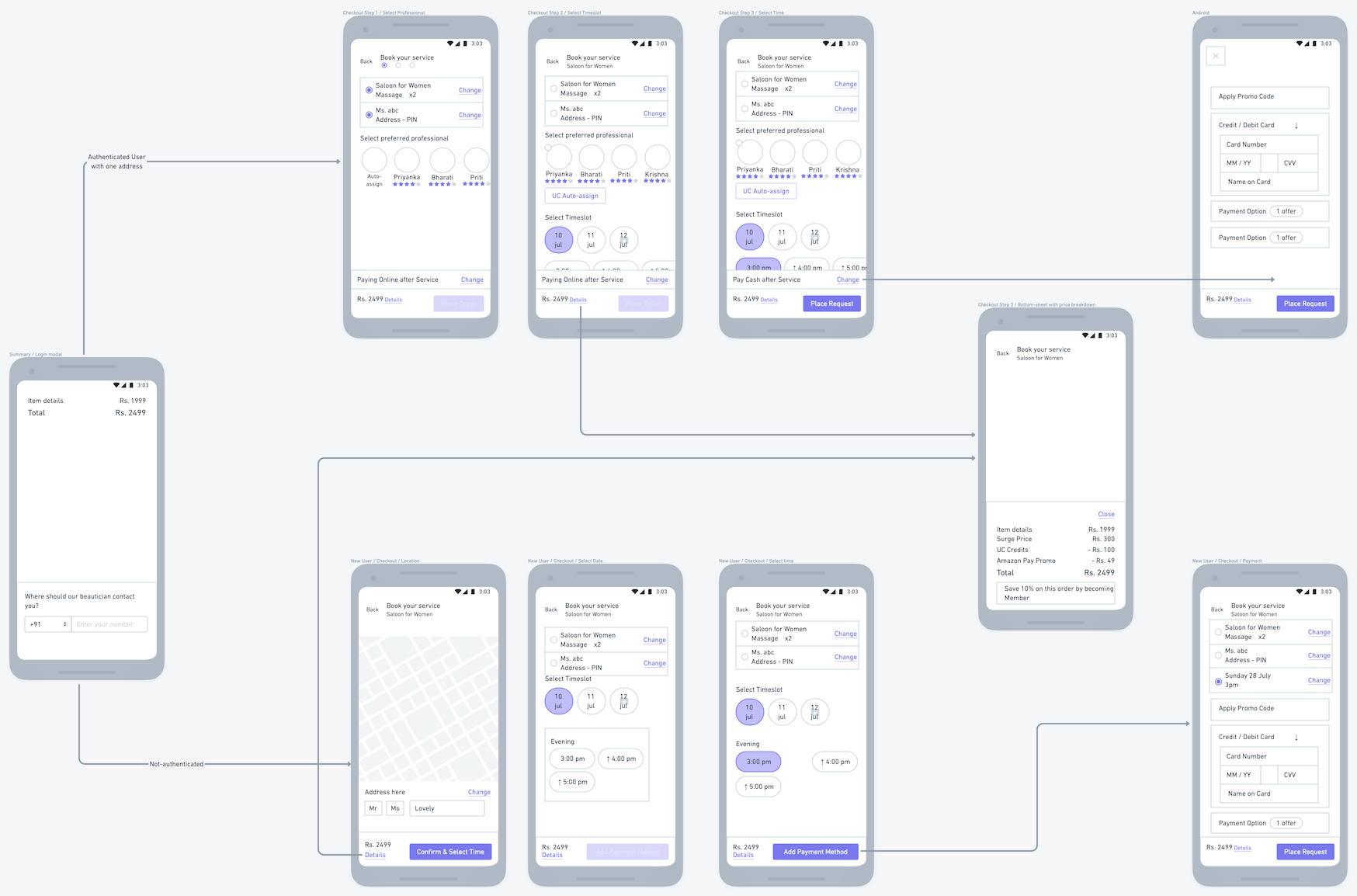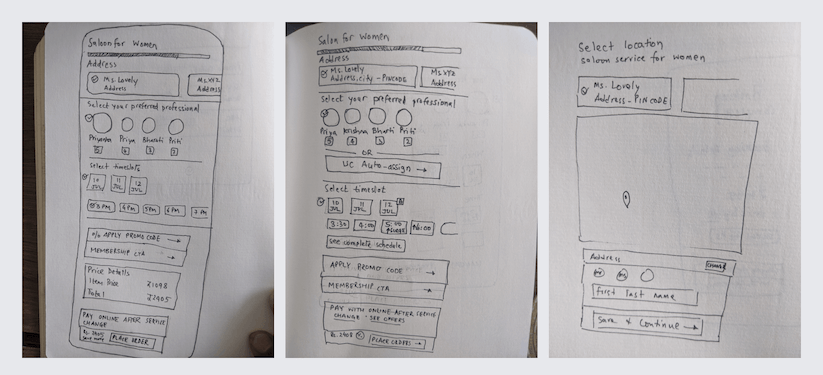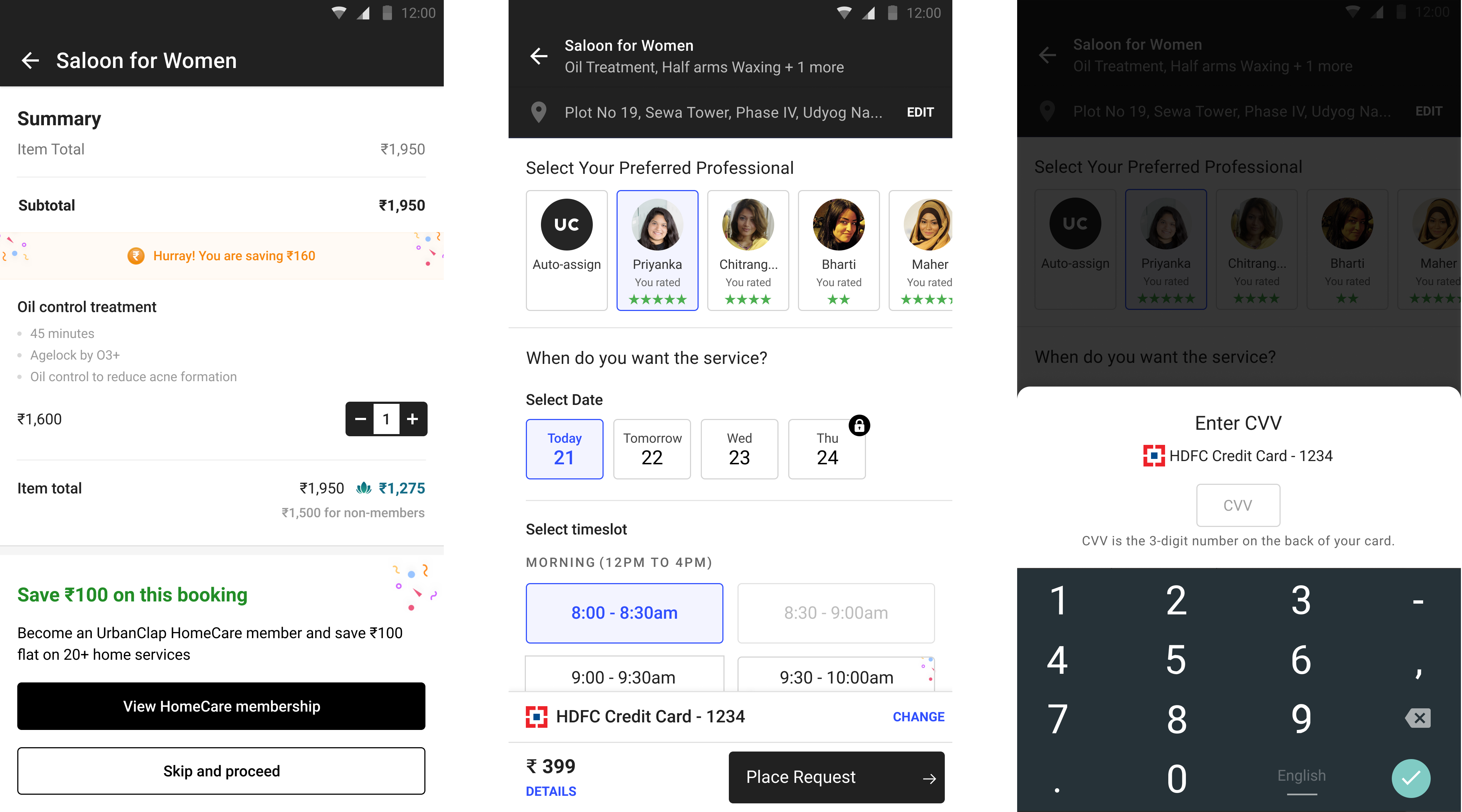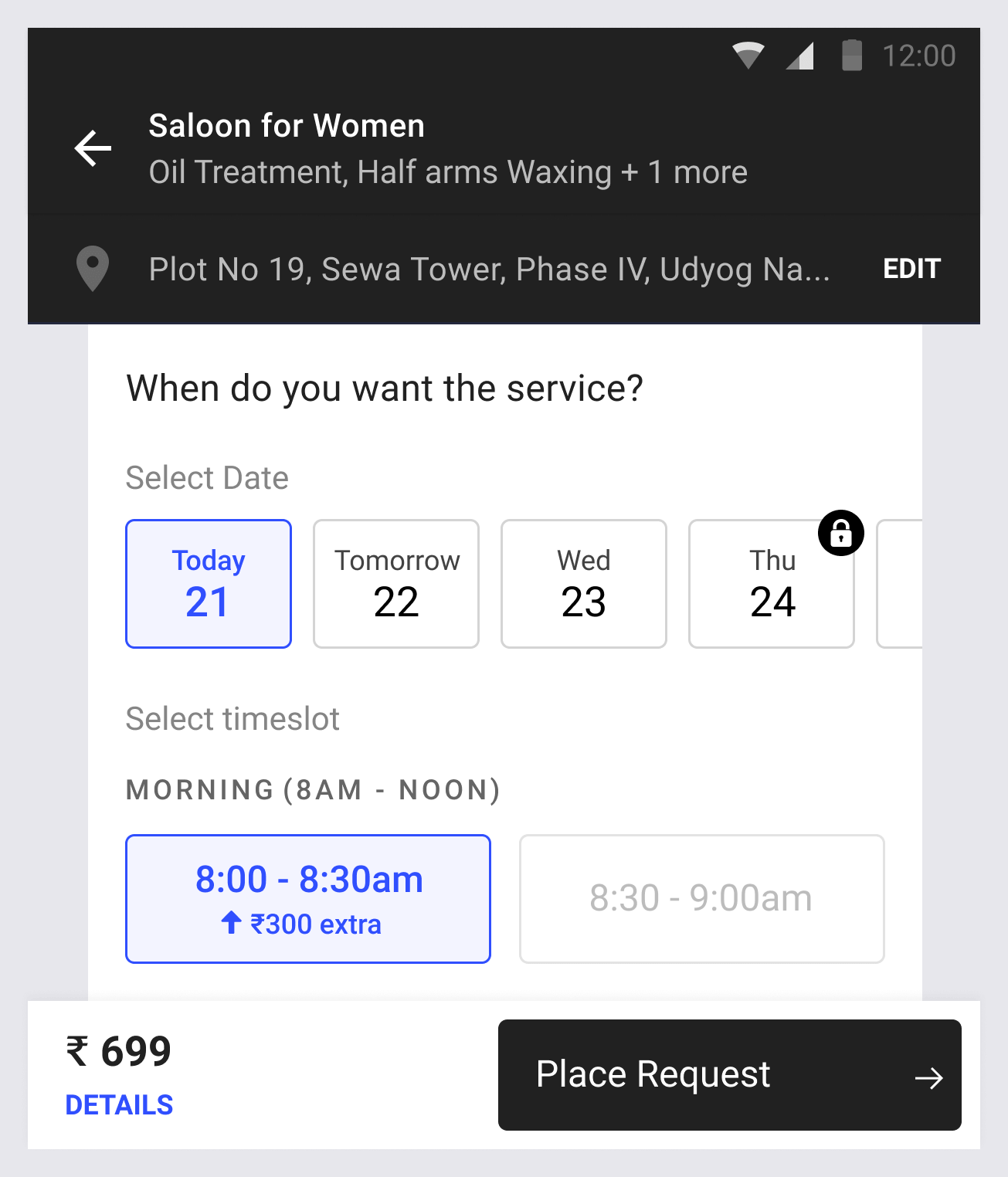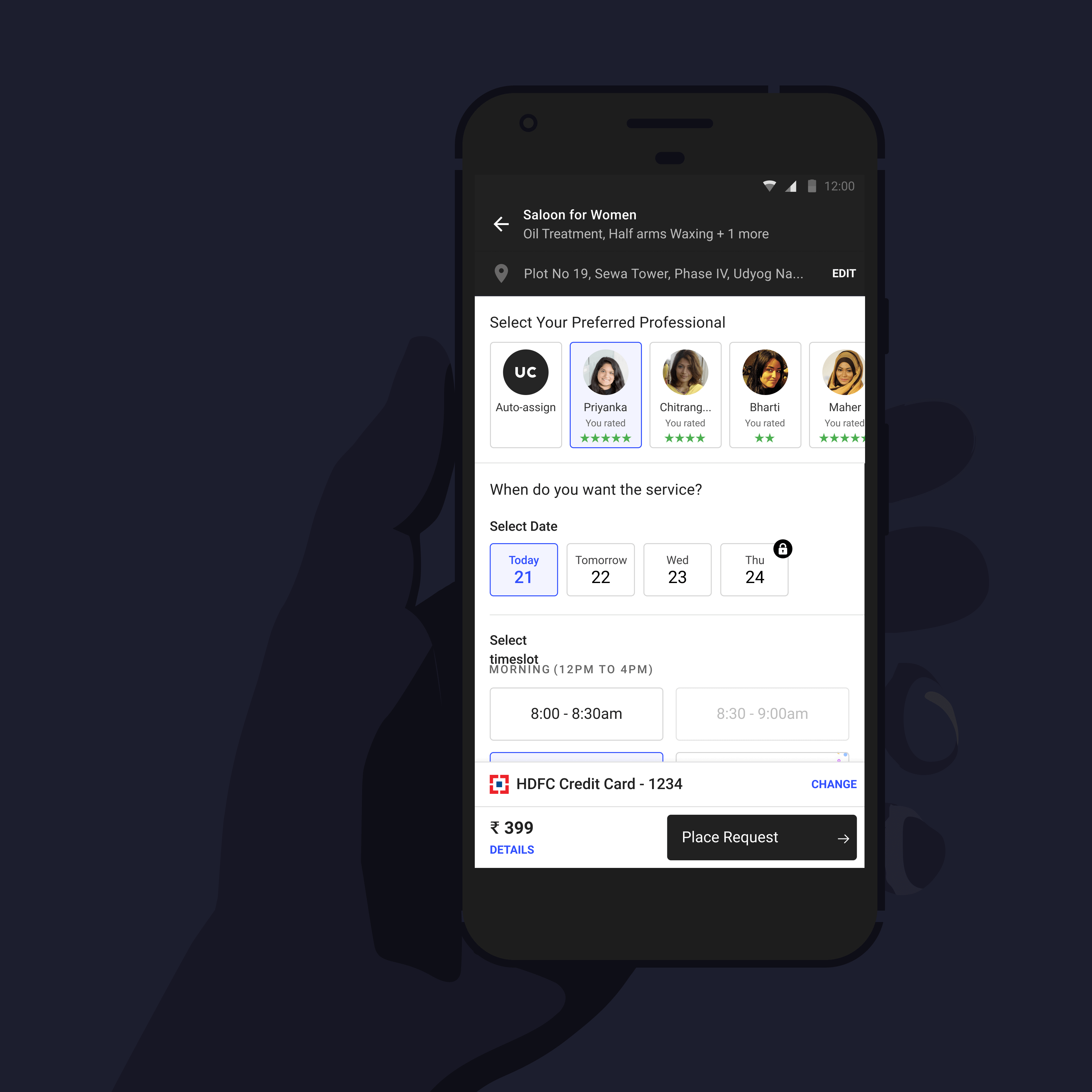UrbanClap (now Urban Company) is a hyperlocal home-services marketplace in India. People from more than 17 cities across the world use it to book a wide range of services, from in-house massages to home maintenance, from a network of over 25,000 micro-entrepreneurs.
-
10 million+
downloads on
Google Play Store -
4th
most popular app on
Apple App Store
Safe to say, there’s quite a lot of people relying on Urban Company on a daily basis to fix their leaking toilets and broken ovens, blow dry their hair and paint their nails before special occasions.
Urban Company (UC) reached out to us with the specific brief of improving their check-out experience.
They hoped to increase conversion rates for both new and returning users by:
- speeding up the check-out and
- building greater trust in the brand during check-out.
Could we design a leaner flow and reassure users, step-by-step, that they could trust the product?
